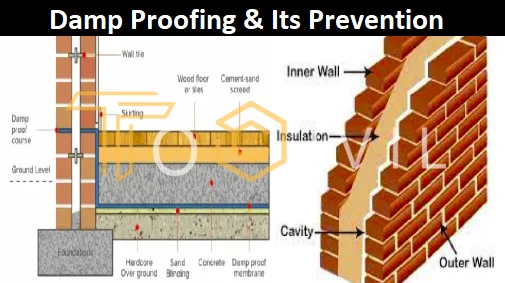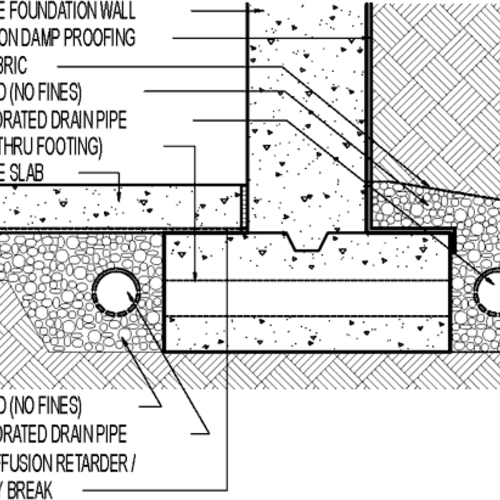Get rid of black mold effectively with mould removal newcastle treatments
Get rid of black mold effectively with mould removal newcastle treatments
Blog Article
Discovering the Numerous Techniques and Solutions for Effective Damp Proofing
Wetness in structures positions significant obstacles to both structural stability and interior air high quality. Different techniques and remedies have emerged to combat this pervasive concern. From standard damp-proof membranes to innovative chemical therapies, each technique uses one-of-a-kind advantages. Recognizing these alternatives is important for reliable moisture control. Picking the appropriate remedy depends on details building problems and demands, triggering more exploration into the most reliable damp proofing techniques offered.
Understanding the Sources Of Dampness
Dampness can arise from different sources, understanding these reasons is crucial for efficient remediation. Frequently, dampness originates from 3 primary resources: increasing damp, passing through wet, and condensation. Increasing damp happens when groundwater travels up-wards with permeable materials, such as block or stone, commonly because of a lack of a reliable barrier (damp proofing newcastle). Passing through damp is commonly brought on by external elements, consisting of roofing system leakages, defective seamless gutters, or damaged wall surfaces, permitting water to penetrate a home. Condensation, on the other hand, arises from excess dampness airborne, often exacerbated by poor air flow and temperature level distinctions, bring about water droplets creating on surface areas. Determining these underlying issues is necessary, as each kind of wetness needs a tailored technique for remediation. Correct evaluation helps in determining one of the most efficient remedies, inevitably securing the architectural integrity of a building and boosting interior air top quality
Typical Damp-Proof Membranes

Chemical Damp-Proofing Solutions
Chemical damp-proofing services provide an ingenious method to stop dampness invasion in structures. These approaches typically include the application of liquid chemicals that penetrate stonework and form an obstacle against rising moist. Commonly utilized chemicals consist of silanes, siloxanes, and other water-repellent agents that react with surface materials to produce a hydrophobic layer.The application procedure generally requires boring openings right into the walls, infusing the chemical remedy, and enabling it to heal. This approach is particularly helpful for older frameworks where traditional damp-proof membranes might be impractical. Chemical damp-proofing can be much less turbulent and more cost-efficient than considerable renovation projects.While effective, these solutions depend on proper application and ecological problems for peak performance. damp proofing newcastle. Regular maintenance and monitoring are important to ensure the durability of the damp-proofing treatment. In general, chemical damp-proofing represents a flexible option for protecting buildings against moisture-related damages
Cavity Wall Building And Construction Methods
Tooth cavity wall construction techniques use many benefits, especially in wetness control and energy effectiveness. By incorporating an air void in between 2 layers of masonry, these walls effectively reduce water ingress while enhancing insulation. This combination not only safeguards frameworks from dampness however also contributes to reduced power usage.
Advantages of Dental Caries Walls
When thinking about effective wet proofing methods, the benefits of cavity wall surfaces stand apart plainly. Tooth cavity wall surfaces consist of 2 different layers, producing an air gap that properly lowers moisture infiltration. This design decreases the risk of wetness, as the outer wall acts as a barrier against rainfall and water access. Furthermore, tooth cavity wall surfaces enhance thermal insulation, which contributes to energy performance by lowering warm loss. They also offer audio insulation, aiding to create a quieter indoor setting. The air void enables for air flow, which assists in moisture control and decreases the likelihood of mold development. These benefits not only improve the total comfort of a structure however likewise add to its durability and architectural honesty.
Dampness Control Strategies
Efficient moisture control techniques are important in cavity wall surface building to assure long-lasting defense against dampness. One key technique entails the consolidation of weep holes, which help with water drainage from the cavity, stopping build-up. In addition, making use of breathable membrane layers can help handle moisture degrees while permitting caught vapor to escape. Appropriate placement of insulation is likewise essential, as it must not obstruct drain courses. Moreover, ensuring that the outer fallen leaves of the dental caries wall surface are created with water-resistant materials enhances overall toughness. Routine maintenance checks are necessary to recognize any clogs or damages early, guarding the structure's stability. Eventually, a mix of these techniques develops a durable defense versus wetness intrusion in dental caries walls.
Insulation and Energy Effectiveness
Insulation plays an important function in improving energy performance within tooth cavity wall building. By including insulating products, these walls develop a thermal obstacle that reduces warm loss and reduces power intake. Effective insulation not just aids keep a steady interior temperature yet also minimizes the threat of wetness, as it protects against condensation within the wall tooth cavity. Different strategies, such as the use of stiff foam boards or mineral woollen, can be used to accomplish excellent insulation performance. In addition, proper setup is essential to guarantee that spaces and voids are reduced, which can otherwise endanger energy performance. Inevitably, a well-insulated cavity wall adds greatly to general sustainability and decreases cooling and heating expenses for house owners.
Exterior Damp Proofing Methods
External wet proofing techniques are important for safeguarding structures from wetness seepage. Two efficient techniques include the application of water-proof membrane layers and the setup of French drains. These remedies assist mitigate water accumulation and preserve the integrity of buildings.
Waterproof Membrane Layer Application
While various methods exist for protecting against wetness access, the application of waterproof membranes continues to be a very reliable exterior wet proofing strategy. These membrane layers are typically made from materials such as polyethylene, rubber, or modified asphalt, offering a durable barrier versus water infiltration. The installation process includes applying the membrane layer to the exterior surface areas of structures or wall surfaces, guaranteeing full coverage to avoid leakages. Appropriate adhesion and sealing at joints are important to making the most of performance. Waterproof membrane layers can be used in different kinds, consisting of liquid coatings and sheet membranes, enabling adaptability based upon the specific requirements of the structure. This approach not only shields structures from moisture yet also improves their durability and structural integrity.
French Drain Installation
One efficient method for taking care of groundwater and avoiding wetness buildup around a structure's foundation is the installation of a French drain. This water drainage system contains a trench full of gravel and a perforated pipe that redirects surface water away from the foundation. Correct installment requires mindful planning, making sure that the drainpipe inclines away from the structure to promote excellent water circulation. Additionally, the area of the drain is essential; it needs to be positioned in locations susceptible to merging or excess dampness. Regular maintenance, including clearing up particles from the crushed rock and guaranteeing the pipeline stays unobstructed, is essential for lasting effectiveness. Inevitably, a well-installed French drain can considerably decrease the threat of water-related issues in cellars and foundations.
Interior Waterproofing Methods
Inside waterproofing techniques are important for shielding a building's inside from wetness seepage and prospective water damage. These approaches usually entail the application of specialized products and techniques developed to develop a dampness barrier within the structure. One typical strategy is using water resistant coverings or sealers on wall surfaces and floorings, which avoid wetness from permeating surfaces.Additionally, mounting interior drain systems, such as sump pumps, can successfully manage water accumulation in cellars and crawl spaces. An additional approach entails the usage of vapor obstacles, which are set up to inhibit wetness movement from the ground into living spaces.Moreover, addressing any kind of fractures or spaces in walls or foundations with suitable sealers ensures a detailed protection versus water invasion. By applying these interior waterproofing strategies, building owners can substantially minimize the threat of mold development, architectural damage, and various other moisture-related issues. Correct implementation of these techniques is necessary for lasting security and structure honesty.
Regular Upkeep and Assessment Practices
Routine maintenance and inspection practices are essential for assuring the lasting efficiency of wet proofing remedies in any kind of structure. Regular checks allow homeowner to determine early signs of wetness invasion, such as peeling off paint, mold and mildew development, and mildewy odors. These indicators can signify underlying problems that need immediate attention.Inspections must be conducted at least every year, focusing on susceptible locations like cellars, crawl spaces, and exterior walls. Throughout these analyses, residential property proprietors need to take a look at sealants, drainage systems, and air flow to verify they work correctly.Additionally, preserving downspouts and seamless gutters is crucial, as blocked systems can cause water accumulation near the structure. Applying a normal upkeep routine, along with prompt repairs, can considerably prolong the life expectancy of wet proofing actions and shield the structural stability of the building. Aggressive procedures inevitably add to the overall health and wellness and safety and security of the website living atmosphere.
Often Asked Questions
The Length Of Time Does Damp Proofing Normally Last?
The period of wet proofing effectiveness differs, typically lasting in between 20 to 50 years. Aspects such as application high quality, environmental conditions, and upkeep techniques significantly influence the long life of the moist proofing treatment.

Can I Damp Evidence My Home Myself?
The individual contemplated the feasibility of DIY damp proofing. With appropriate study and the best materials, it is possible. Nevertheless, they additionally acknowledged the significance of professional support to guarantee durable effectiveness and stop future issues.
What Are the Indications of Inadequate Damp Proofing?
Signs of inefficient moist proofing include relentless mildewy smells, noticeable mold development, peeling paint, damp spots on wall surfaces, and wood decay - damp specialist newcastle. Homeowners should resolve these problems immediately to avoid further damages and health and wellness worries
Does Damp Proofing Affect Indoor Air High Quality?

Just How Much Does Expert Damp Proofing Cost?
Specialist damp proofing costs vary considerably, generally varying from $1,000 to $5,000 depending on the building's size, the degree of the moist issue, and picked approaches. Each circumstance needs a customized analysis for accurate rates. Typically, wetness stems from 3 primary sources: increasing wet, permeating moist, and condensation. When taking into consideration effective moist proofing approaches, the benefits of cavity walls stand out prominently. Outside moist proofing methods are essential for safeguarding structures from dampness infiltration. While various approaches exist for protecting against wetness ingress, the application of waterproof membranes stays an extremely efficient outside damp proofing technique. Signs of ineffective damp proofing include consistent mildewy odors, visible mold growth, peeling off paint, damp spots on wall surfaces, and timber degeneration.
Report this page